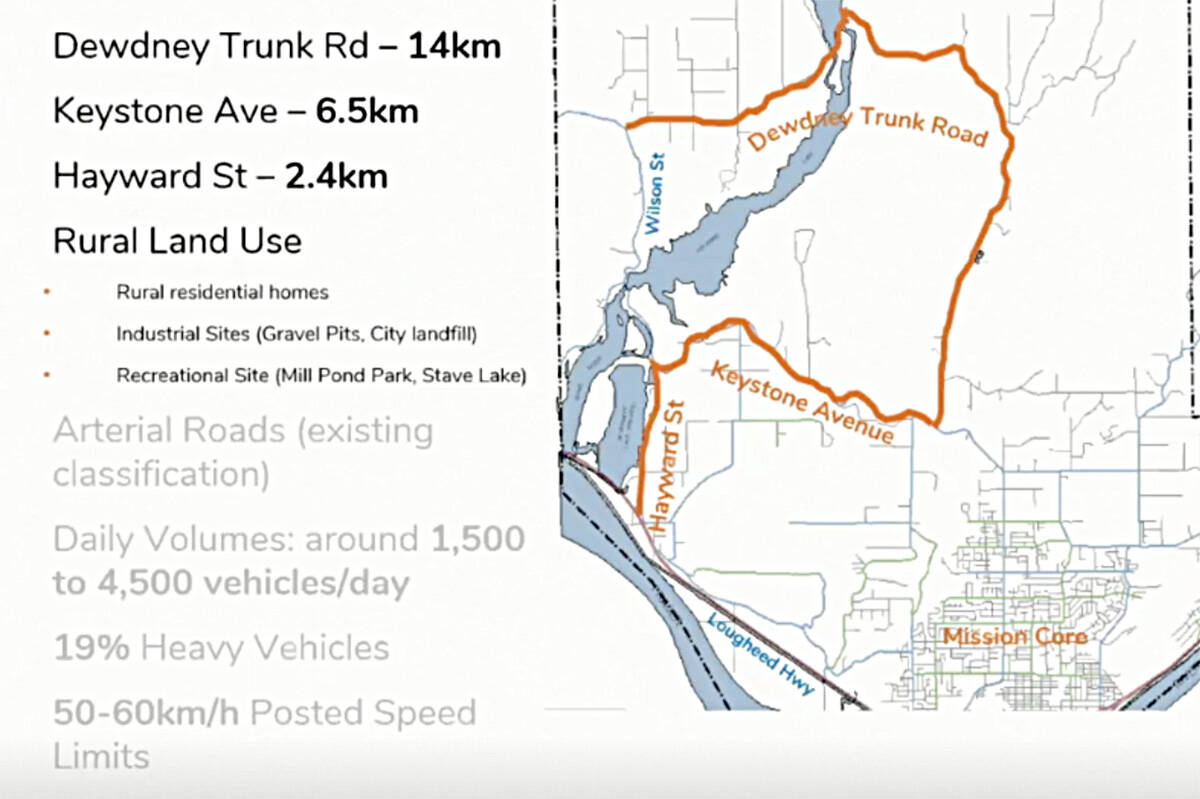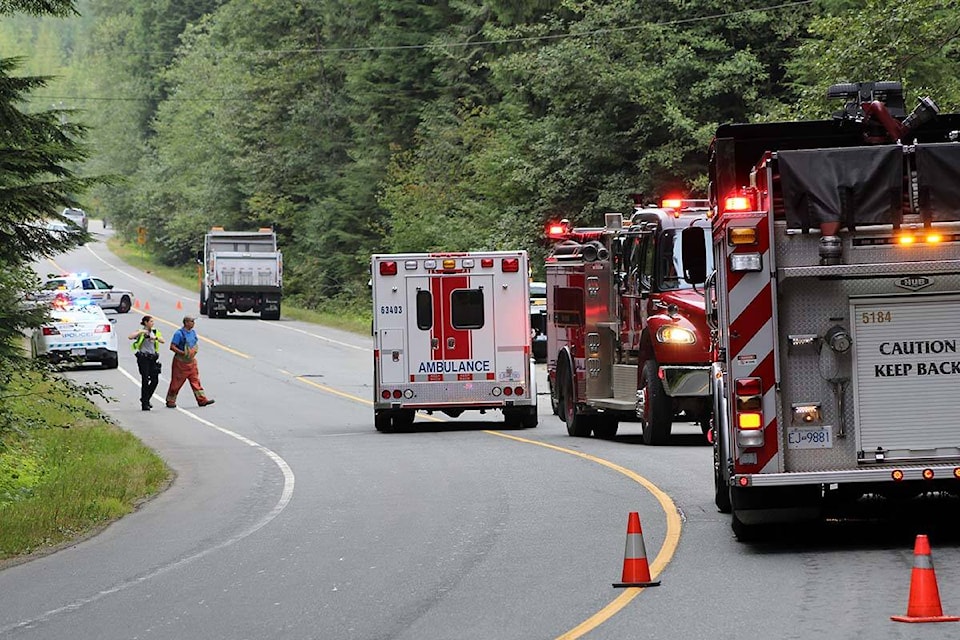Mission council has been given a set of recommendations on how to improve safety on the rural roads in the Steelhead and Stave Falls communities.
Council voted for a review of the short-term recommendations, and implementation of countermeasures at high-priority locations starting this summer.
“I hear about Dewdney Trunk Road, in particular, every day from citizens who are concerned about speed and accidents,” Mayor Paul Horn said. “I believe this is long overdue.”
Safety on the Mission’s rural roads have been an issue continually brought up by residents of the Steelhead and Stave Falls communities.
Representatives of the Steelhead Community Association sent a delegation to council to speak of their concerns in February, 2021.
They described the area’s roads – crowded by local, industrial and recreational users – as the “Wild West of Mission” and requested a traffic study and various safety improvements.
Traffic-safety consultants were hired by the city to study 23 kilometres along Keystone Avenue, Hayward Street, and a section of Dewdney Trunk Road.
These corridors are classified as arteriole roads, with volumes ranging from 1,500 to 4,500 vehicles a day. They also contain three of the top 14 collision-prone areas in the city. Fatal crashes are double the city average in the study area.
Conclusions were drawn from observation, RCMP and ICBC crash data, road geometry, and operational issues.
Road geometry, speed, lighting, weather conditions, and inexperienced drivers were found to be top factors.
According to ICBC data over the last five years: collisions are 13 per cent higher in the area when compared with the rest of Mission.
The vast majority (70 per cent) are off-road crashes, most only involving a single vehicle; 60 per cent took place on curved segments, and half occurred on segments with moderate to steep grades.
A lack of warning and guidance signs at challenging segments were noted in the study, along with speeding and a lack of traffic control measures.
There are also frequent skewed angles, limited sight distances and narrow shoulder space adjacent to drop offs.
Heavy trucks – which account for 19 per cent of traffic and 23 per cent of collisions – are slowed by long segments of steep inclines, which leads to frustrated drivers trying to make risky passes.
A total of 45 per cent of crashes occurred during poor to average lighting; and 30 per cent involved inexperienced drivers.
In the short-term, the recommendations suggest a series of low-cost options with a total estimated price of $400,000.
These include new and upgraded flashing warning signs at key locations, post-mounted delineators, restored pavement markings, parking-time limits and restrictions, education initiatives, and getting RCMP to step up enforcement in the area.
Council has $200,000 in budget-approved spending available for immediate implementation in high-priority areas, but more funds may be granted by ICBC, according to the report.
The long-term recommendations have an estimated cost of $13 million, not including contingency funds, and staff will need to analyze feasibility ahead of any capital planning.
These recommendations include: all-way stop controls, overhead flashers, and geometric improvements at intersections; road-side barriers, speed readers, upgraded road shoulders, lighting and signage improvements, high friction pavement, climbing lanes, shuttle transit to recreational areas, and additional studies.
The city spent $50,000 on the study, with an additional $30,000 from ICBC.

